#paranormalinvestigator
Text

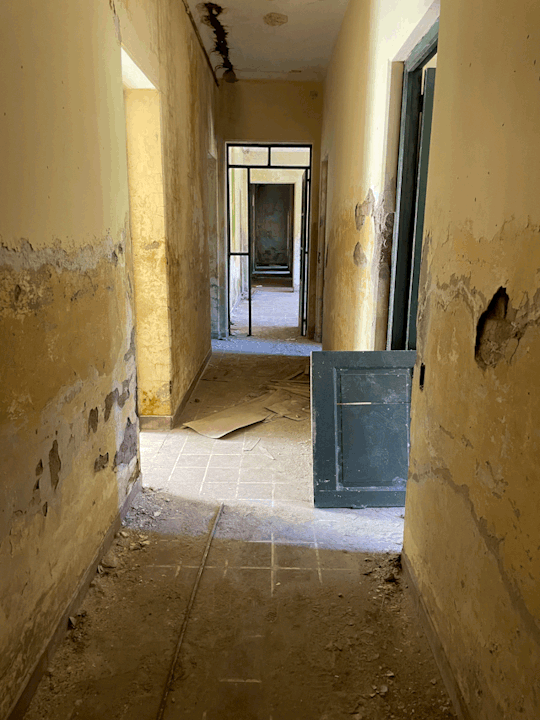
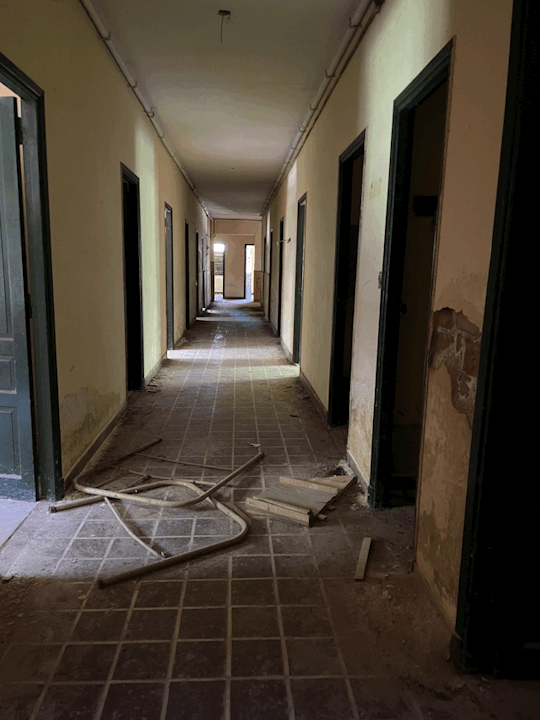


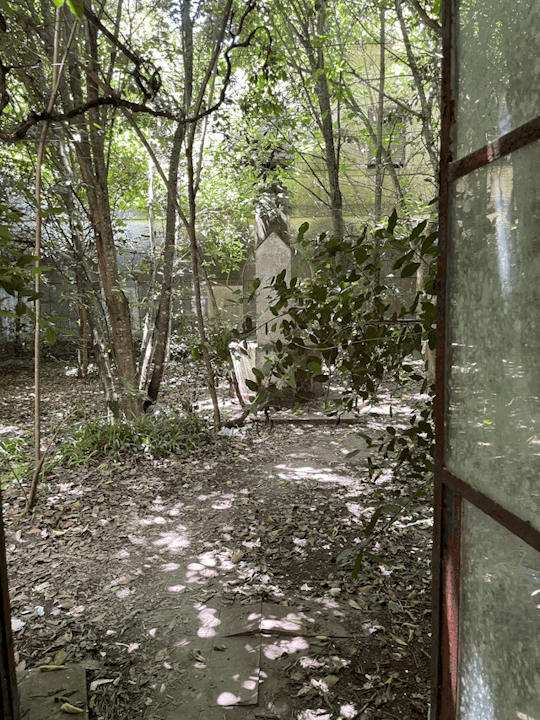



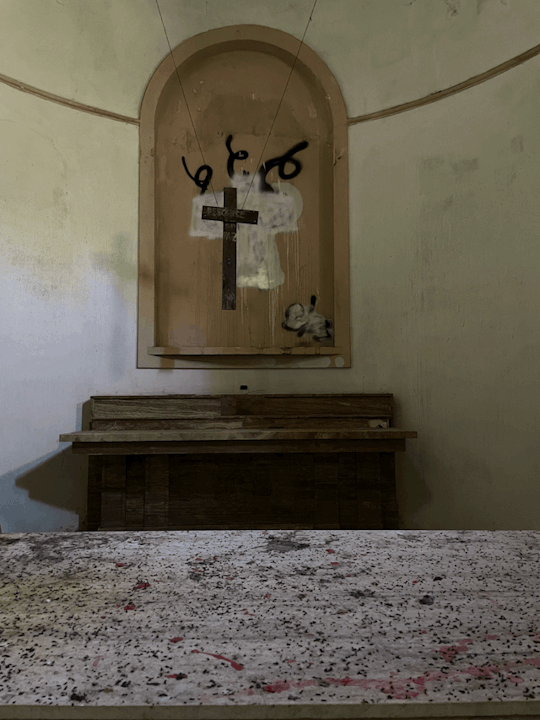
This has to be one of the MOST HAUNTED places in South America!
youtube
#ghost#paranormal investigation#urbex#urbexdecay#urbexexploration#urbex video#paranormalactivity#ghosts#ghosthunter#paranormalinvestigation#ghosthunters#poltergeist#paranormalinvestigator#ghostly#ghosthunting#hauntedplaces#bruceparanormal#ghost adventures#creepypasta#creepy#creature#scarystories#shadowpeople#artist#drawing#photography#Youtube
2 notes
·
View notes
Text
Why is it "easier" to capture paranormal evidence using analog tools?
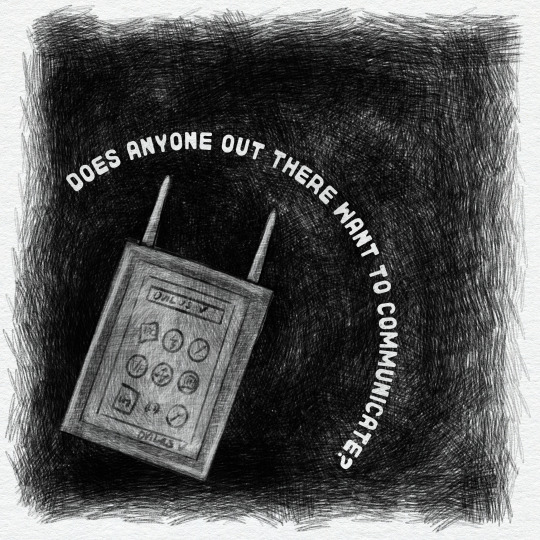
I've been writing a lot about how so many ghost hunting tools feel very analog. So many of them seem like relics from the 1980s and 1990s, like the spirit box, which is simply a modified radio.
I think that innately, we trust these more physical, analog ways of cataloging and interacting with the paranormal. Yes, it's easier to fake a digital photograph of strange phenomena or use a Spirit Box app on your phone. But for some reason, there's a sense that it's easier for the paranormal to interact with these more physical, analog, retro forms of communication and documentation.
I struggle to put my finger on exactly what this is. After all, why do we think that a ghost, spirit, or other paranormal phenomena would have a harder time interacting with a digital device like a smartphone or a laptop, than it would with a older electronic device like a radio or a instant camera?
Shouldn't it be easier to adjust a line of code than to move something in the physical world? After all, if an entity is incorporeal, and so much of our modern technology is as well, then why wouldn't they be able to communicate with us through our smartphones, tablets, and computers just as easily—or more easily—than they might through analog media?
Thinking about this using the Ovilus
You could argue that an entity couldn't interact with modern technology in the same way that it could, say, a film camera, because it's more complex. Maybe my example of an entity interacting with digital devices on a code level is absurd. That argument is fair, but if that's the case, why would a ghost more easily interact with popular digital paranormal investigation gear, like an Ovilus?
While the Ovilus is a (sort of) recent invention, dating back to the late 2000s or so , it has the vibe of an old piece of tech. It's a purpose-built device that takes environmental readings and translates them into words (and other output, like an image ).
My understanding is that this is how the typical Ovilus works (though I assume there's some amount of variation between models): it contains a word bank of ~2,000 words. Each of those words seems to be correlated to a different EMF reading (according to this write-up, at least.) The device monitors EMF readings, then when there's a fluctuation in the amount of EMF in the area, the Ovilus outputs the word that is associated with that reading.
The Ovilus is a very cool and inventive device. I've only used one in person once, but I'd love to get the chance to again. However, there are a number of criticisms you could level at the Ovilus, and many of them are very fair. (I tend to be of the opinion that treating paranormal investigation as scientific experiments—both from an earnest POV and a debunking POV—is missing the point. But that's something for another day.)
My big question here, though, related to analog vs. digital ghost hunting question, is: How does the entity you're communicating with know what words are in the word bank and what EMF readings they're associated with?
To me, this puts the Ovilus in the same camp as something like a modern smartphone: it's a digital device that can interact with and gather data from the world around it, but it operates in a way that's is opaque to (most) humans and entities alike.
Anyone can understand the basic mechanics behind a film camera or a cassette tape—they're straightforward machines, and the operator can open it up and see the physical thing that the data is stored on (the film or magnetic tape, respectively.) So it feels plausible that it'd be straightforward for an entity to interact with. But digital ghost hunting devices that turn environmental readings into words via code and databases? Less so.
Synchronicity as a tool
I'm not saying that the Ovilus doesn't "work," I'm just saying that this piece of physical gear is likely best viewed from a synchronistic standpoint. My credulity is strained by the idea that an entity could understand what words are affiliated with each EMF reading and manipulate the EMF based on that. Like any tool, something like the Ovilus should be woven into the larger narrative of an investigation rather than have its results taken on their own.
What do I mean by that? Basically, if an investigator is using an Ovilus and gets the word "demon" and then thinks that means that they're communicating with a demon, with no other evidence to support that, then I think they're jumping to conclusions.
However, if an investigator is, say, using an Ovilus while someone else is doing the Estes Method, and both the Ovilus and the Estes session start to output the same words or variations on a theme, then that's something to pay attention to and look into.
Basically, any investigation device is probably at its best when its data is viewed as part of a larger narrative of an investigation, rather than when taken at face value.
But if a large contingency of the ghost hunting world is willing to consider the Ovilus as a potentially effective ghost hunting tool, why does it seem like there's so much more skepticism when it comes to considering the possibility that entities could communicate using modern technology? [^1]
Okay, I know I just wrote a whole blog post about that yesterday, but I mean setting aside things that are being manipulated by algorithms and "machine learning." So, yes, there are good reasons not to trust the technology that we use these days. (In addition to the ease of fakery—accidental or intentional—we now all know that our phones spy on us and track our every move.)
But there's something else afoot here. While plenty of folks (including me) do put stock in the synchronicities that show up on our computers and smartphones, I just don't think as many people people generally believe that ghosts are able to interact with those devices.
Like I said, most people don't understand how smartphones and computers work, or at least not as well as we grok radios and instant cameras. But again, why do we seem to think that incorporeal forms would have an easier time interacting with something physical then they would have interacting with something digital?
Or here's a question: are paranormal phenomena interacting with us on our digital devices, but we can't tell, since anything could be written off as a glitch or algorithmic foible? I wouldn't be shocked if that were the case. After all, isn't the digital world—cyberspace, or whatever you want to call it—potentially closer to what the spirit world might be like? Isn't cyberspace place where time and space work differently, and complex, "invisible" forces carry great sway—in a way that isn't so different from some imaginations of other realms of reality?
[^1] Not all investigators feel this way, of course! I'm always a fan of Liminal Earth's approach to the paranormal, which is to have an open mind and try to connect to weirdness in creative ways. They've even shared a way to make custom a digital spirit box using mp3s.
#cryptidcore#cryptidacademia#ghost hunting#ghosts#paranormalinvestigator#paranormal podcast#digital drawing
5 notes
·
View notes
Text
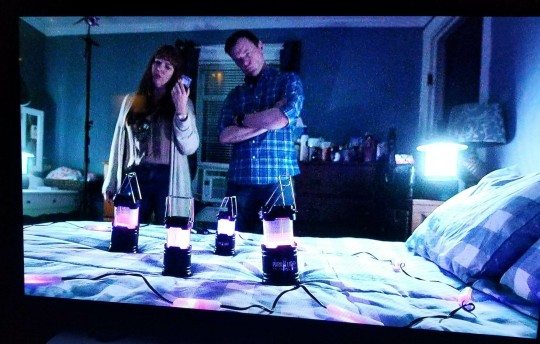
The Tripwire EMF Cable and the Para Light EMF Lanterns were featured on Kindred Spirits again on Saturday night! Links to each right in the photo.
#paranormalequipment#ghosthunters#paranormalinvestigation#paranormalinvestigator#ghosthuntingequipment#ghosthunting#ghosthunter#ghostadventures#paranormal#ghosthunt#kindredspirits#Paralight#ghosthunterstore#ghost hunting#ghost and hauntings
5 notes
·
View notes
Photo

https://anchor.fm/hoodooparanormal/episodes/10-things-to-know-before-you-go-Ghost-Hunting-e1mdn85 Listen to our latest show on how to conduct paranormal investigations . #paranormalinvestigator #hauntings (at Columbia, South Carolina) https://www.instagram.com/p/ChhUX-mugzn/?igshid=NGJjMDIxMWI=
2 notes
·
View notes
Photo

A recent investigation spot! I feel a very distinct presence at this bridge and he's not very kind. . . #investigator #ghosthunter #paranormal #paranormalinvestigator https://www.instagram.com/p/CdWLKdTuoq_/?igshid=NGJjMDIxMWI=
2 notes
·
View notes
Text
Discover the haunting tale of Uniondale's Vanishing Hitchhiker, Maria Roux. Is it truly her ghost wandering the road, or is there more to the story?
youtube
#darkhistory #ghost #paranormal #ghoststories #trueghoststory #creepy #mythology #karoo #weird
0 notes
Text
youtube
NICOLE STRICKLAND - THE AFTERLIFE CHRONICLES: EXPLORING THE CONNECTION BETWEEN LIFE, DEATH, & BEYOND
Welcome to Phantoms & Monsters Radio. My guest is paranormal investigator & author Nicole Strickland. We will be discussing her most recent title 'The Afterlife Chronicles: Exploring the Connection Between Life, Death, and Beyond. Join us in the chat.
Nicole Strickland is a well-respected afterlife & paranormal researcher, author, podcaster, and speaker from San Diego, California. She is the founder, director, and case manager of the San Diego Paranormal Research Society (SDPRS). Nicole is the Ghost Research Society's California Coordinator and is a consultant to other investigative teams. Since 2011, she has co-hosted the “Spirits of the Adobe” tours at the iconic Rancho Buena Vista Adobe.
Blending her love of history, paranormal studies, and writing, Nicole has written several books, including Field Guide to Southern California Hauntings, The Haunted Queen of the Seas: The Living Legend of the RMS Queen Mary, Spirited Queen Mary: Her Haunted Legend, RMS Queen Mary: Voices from Her Voyages, San Diego’s Most Haunted: The Historical Legacy and Paranormal Marvels of America’s Finest City, Spirits of Rancho Buena Vista Adobe, Max and Kayli: Two Remarkable Felines Forever Imprinted on My Heart and The Afterlife Chronicles: Exploring the Connection Between Life, Death, and Beyond. She is also a writer and contributor to Paranormal Underground Magazine.
Nicole gives presentations about a variety of paranormal topics at conferences, events, and libraries. She has presented at some of the best-known conventions, such as the Oregon Ghost Conference, Port Gamble Ghost Conference, Troy Taylor’s Haunted America Conference, Maritime Ghost Conference of San Diego, Preston Castle Benefit Paracon, Ghost Fest IV aboard the Queen Mary, and Strange Escapes, among others. She is represented non-exclusively by RK Entertainment.
Nicole has been featured in a myriad of media outlets discussing her work as a paranormal researcher. These include several local San Diego newspapers and magazines and news programs, such as Good Morning San Diego, San Diego Living, KPBS Evening Edition, and Channel 8 Evening Edition. She has been interviewed for nationally televised programs, including My Ghost Story: Caught on Camera, Travel Channel’s Ghost Stories, and Famously Afraid; has been further interviewed on hundreds of radio shows and podcasts.
#Nicole Strickland#lon strickler#paranormal#queen mary#paranormal investigation#paranormalinvestigator#Youtube
0 notes
Photo

This is a headstone. And any rocks you see in the background are also headstones. Buried deep within the grass of this cemetery are field stones and bodies with all being unlabeled and many being unmarked. There are 150 with field stone markers and 90 have no markers at all. This cemetery was hidden under vegetation for over 50 years before restoration efforts began in 2000. Videos of this cemetery to come soon 🖤 ------‐---------- ABOUT US ----------------- Spirit Diaries is a true-story podcast and award-winning paranormal investigation series that deep-dives the paranormal and unexplained. Free to watch & listen to on YouTube! ... #graveyardshift #graveyard_dead #paranormalinvestigator #graveyardphotography #graveyard_fanatics #graveyardbeauty #paranormalresearch #graveyard_life #graveyard_photogroup #cemeteryphotography #cemetery_shots #paranormalinvestigators #cemeteriesofinstagram #cemetery_nation #taphophiles_only #taphophiles #tombstone #mementomori #paranormalshow #coffingrave #halloween365 #halloweeniseveryday #spookytravel #interestingraves #tennessee #falsecrypt #paranormalpodcast #cemetery #fieldstone #strangethingsiveseen (at Tennessee) https://www.instagram.com/p/Cpxb9B-MY4v/?igshid=NGJjMDIxMWI=
#graveyardshift#graveyard_dead#paranormalinvestigator#graveyardphotography#graveyard_fanatics#graveyardbeauty#paranormalresearch#graveyard_life#graveyard_photogroup#cemeteryphotography#cemetery_shots#paranormalinvestigators#cemeteriesofinstagram#cemetery_nation#taphophiles_only#taphophiles#tombstone#mementomori#paranormalshow#coffingrave#halloween365#halloweeniseveryday#spookytravel#interestingraves#tennessee#falsecrypt#paranormalpodcast#cemetery#fieldstone#strangethingsiveseen
0 notes
Text
#paranomal#paranormalactivity#real ghost photos#ghost hunting#ghosts#ghost#ghost and hauntings#ghost stories#paranormalinvestigator#ghosthunters#gallofamilyghosthunters#bobbyjgallo#familyspirits#familyspiritsbook#ghosts paranormal haunted spirits webseries#webweries
1 note
·
View note
Photo

Another great show lined up for Monday Night! Make sure to drop in at 9:00PM and join the live chat on the War Party Paranormal Youtube channel!! #gethaunted . . . . . #ghost #ghosthunter #ghosthunters #ghosthunting #ghosts #ghoststories #haunted #hauntedhouse #hauntedplaces #haunting #joehuntsghosts #oraclecards #paranormal #paranormalactivity #paranormalexperience #paranormalinvestigation #paranormalinvestigations #paranormalinvestigator #paranormalinvestigators #scary #spiritguides #spiritualism #spirituality #spooky #supernatural #tarot #warpartyparanorml #weird https://www.instagram.com/p/Cn4RWVauY49/?igshid=NGJjMDIxMWI=
#gethaunted#ghost#ghosthunter#ghosthunters#ghosthunting#ghosts#ghoststories#haunted#hauntedhouse#hauntedplaces#haunting#joehuntsghosts#oraclecards#paranormal#paranormalactivity#paranormalexperience#paranormalinvestigation#paranormalinvestigations#paranormalinvestigator#paranormalinvestigators#scary#spiritguides#spiritualism#spirituality#spooky#supernatural#tarot#warpartyparanorml#weird
0 notes
Text
youtube
#haunted places#exploring with josh#urbexexploration#urbexdecay#urbex#twin paranormal#tiktok#urbex video#sam and colby#paranormalinvestigator#paranormal#mystery#paranormal activity#ghost stories#scary stories#spirits#ghost story#paranormal investigation#argentina#buenos aires#jasko#Youtube
0 notes
Text
Accidentally overriding reality: untrustworthy and accidentally faked photos

I've been thinking and writing a lot about instant photography as paranormal evidence over the last week or so, and over this period of time, I've come across a number of articles talking about how digital photography, in particular smartphone photography, is beginning to feel less and less reliable. In particular, two news stories have broken that talk about how in some circumstances, you can't trust the pictures that you take on your phone.
The first story is about Samsung's photo "enhancements" (much more on that down below). The second is about how people thought that they were cropping out or redacting sensitive information on screen grabs on their Google Pixel phones because it looked like the images were cropped or redacted. But years later, it's been revealed that the "redacted" data was still available in the file, and it can be retrieved, meaning that credit card numbers, names, addresses, and other sensitive information has been compromised. (By the way, a second "acropalypse" bug has now been found on Window devices, as well—another strike against feeling like you can trust the images that you see on your devices. Images aren't quite what they seem.)
Before I get into the Samsung controversy, I want to elaborate a bit more on some reasons why instant photography feels so trustworthy, particularly in contrast to the mysterious ways in which are phones can twist reality in the photographs that we take.
Instant photos feel real
Like I mentioned when I wrote about instant photos as paranormal evidence, Polaroid photos are extremely physical. They take a moment and immediately allow you to have a keepsake of it, a physical reminder of where you just were, who you're with, or what just occurred. I love bringing my Polaroid or Fujifilm camera on trips, because it's nice to have that physical souvenir of a place, rather than just a bunch of smartphone photos.
So when trying to create a record of something as insubstantial as a ghost, of course it makes sense to want to do that through a physical means. Because, again, instant photographs allow you to take a particular moment in time—something that can only be experienced by being there physically—and turn it into an artifact immediately.
I think there's something in the desire to try to capture a non-corporeal entity like a ghost in an incredibly physical and immediate form of media. It almost feels like a way to "prove" the existence of ghost.
In addition to being harder to fake than digital photography, a Polaroid of a ghost or paranormal phenomena translates an insubstantial thing into a very real feeling photograph. It literally takes the image of the ghost from the theoretical, invisible, untouchable realm of the unknown and turns it into a physical photograph that you can hold. The desire to want to catalog your paranormal experiences using Polaroids makes complete sense. If you see a potentially paranormal anomaly in your instant photo, it feels like the phenomena is more real because it was captured in the picture.
Fakery in smartphone photography
On the other end of the spectrum, there's the computational photography , which can modify the images we photograph with smartphone cameras in various ways. An article in The Verge sums up the recent Samsung controversy well:
This week, Samsung drew criticism for the technology its newer phones use to “enhance” photos of the Moon. A user on Reddit, ibreakphotos, conducted an experiment by creating a blurred photo of the Moon and then taking a picture of it using their Galaxy S23 Ultra. Even though the photo was completely blurry, their Samsung device appeared to add details to the image that weren’t there before, like craters and other marks, calling into question whether the highly detailed Moon photos people have been taking with their Galaxy devices really are photos of the Moon.
The Verge article is a fascinating read; not only does it document the Samsung moon-augmentation scandal, but it also talks about how many, many images of the moon that we see have been modified. Part of that is because it's so easy to do these days:
And while faking the night sky once involved “sandwiching negatives, doing things in the darkroom,” as Nordgren says, it’s become far easier and more prevalent in the age of Photoshop.
“One of the biggest things people do is sky replacements,” Lynsey Schroeder, a professional astrophotographer tells The Verge. “They’ll take the Milky Way from a different photo and Photoshop it in so that it looks like it was there.” An expert would immediately know that it’s fake. “But to the general public, they don’t know.”
As someone who's reworked plenty of photos in Photoshop, I can say that this sort of photo manipulation is trivially easy. Like I've mentioned before, as popular apps like Facetune allow people to modify photos on their mobile devices, people have learned to trust digital photography less and less.
But Samsung's wholesale replacement of the moon in photos—using a "deep-learning-based AI detail enhancement engine"—strikes me as a step beyond that. (Samsung has apparently been using AI in their cameras since the Galaxy S10, and their "Scene Optimizer" technology since the Galaxy S21 series. Though I can tell you that pictures of the moon on my Galaxy S22+ still look like garbage. So they've clearly made some major changes for their latest devices. Either that, or I guess I gotta try using my phone's 100x zoom, which I had no idea existed. )
It's one thing for someone to decide to modify their own photographs; it's another for apps themselves to rework images in the process of capturing them.
In the case of someone photographing the moon and getting a completely different image, there was never a "real," unedited version of the image. You can't revert between the edited and original versions; the edit is the only one that exists.
Samsung isn't the only company that has introduced "computational photography" into its cameras. Apple's live photos and portrait mode could be considered computational photography, but as AppleInsider points out, "users are beginning to ask where to draw the line between these algorithms and something more intrusive, like post-capture pixel alteration."
There are so many questions that this raises, but the question of memory resonates the most to me. Many people (myself included) use smartphone photos as an aide-mémoire. I'll often take pictures not because something is beautiful or because I'm expressing myself artistically, but because I want to remember something. I'm not going to post that image to Instagram, but I will scroll back in my phone, see the timestamped, unaesthetic mirror selfie in a venue bathroom, and think "oh, right, that's the day that I went to that concert."
For me, the visual information that I collect in the form of photos is more for constructing and preserving my memories than anything else. So my question is: If our everyday smartphone photos help us remember reality and our pasts, what happens when, unbeknownst to us, our cameras are modifying the images? In that case, it becomes a form of memory modification. At that point, you aren't the arbiter of your memories; the images on your phone can override your recollections. As AppleInsider eloquently puts it, "the final image doesn't represent what the sensor detected and the algorithm processed. It represents an idealized version of what might be possible but isn't because the camera sensor and lens are too small."
There's something truly chilling about that.
The AppleInsider article goes on:
By changing how the moon appears using advanced algorithms without alerting the user, that image is forever altered to fit what Samsung thinks is ideal. Sure, if users know to turn the feature off, they could, but they likely won't.
So here we are, in a place where large tech corporations have the power to override reality—and perhaps even our very memories. No wonder instant photography, despite its limitations, can feel like a more reliable way to access paranormal realities.
If smartphone cameras are increasingly depicting "idealized" images of the world, smoothing out anomalies and removing variations from what an computer might consider "normal," what does that mean for paranormal photography? Is it possible that phone cameras might capture paranormal phenomena, but the AI in the phone's camera wipes that out, replacing it with "expected" reality? Or could strangeness seep in anyway, through synchronicity and glitches?
#cryptidcore#cryptidacademia#ghost hunting#ghosts#paranormalinvestigator#paranormal podcast#nostalgia#90s nostalgia#80s nostalgia#instant photography#instantfilm
5 notes
·
View notes
Text

The Tempest - Live Enviromental Data to Voice/Text now with a real voice mode! Data logging, over 50K words and phrases, ad your own words, English and Spanish. Temp-Humidity-Des Pt-Barometer, E-Field meter and more! More info at https://conta.cc/3DqFh1j
#paranormalinvestigation#ghosthunting#paranormalinvestigator#ghosthunters#ghosthuntingequipment#ghostadventures#ghosthunt#ovilus#para4ce#paranormalequipment#hauntedplaces#hauntedlocations#paranormal#ghosthuntingevents#ghostvoices#ghost and hauntings#paranormal investigator#ghost hunting equipment#ghost hunting#ghost hunters#paranormal investigation#ghosts#ghost and spirits#haunted
2 notes
·
View notes
Photo

Maybe you've never seen an alien, and as far as we know there isn't a human alive that has ever seen God. But we've seen a lot of evidence that suggests that aliens exist. And we've seen a lot of evidence that suggests God exists. If we can believe in one without seeing it, why can't we believe in the other without seeing it? #ufo #alien #extraterrestrial #aliens #unexplained #unexplainedphenomenon #weird #strange #paranormal #paranormalactivity #paranormalinvestigation #paranormalinvestigations #paranormalpodcast #paranormalinvestigator https://www.instagram.com/p/Cghb7_wAVbY/?igshid=NGJjMDIxMWI=
#ufo#alien#extraterrestrial#aliens#unexplained#unexplainedphenomenon#weird#strange#paranormal#paranormalactivity#paranormalinvestigation#paranormalinvestigations#paranormalpodcast#paranormalinvestigator
0 notes
Text
Be sure to tune into our free Tv network Hoodoo Lounge TV, where we stream shows on Paranormal, Horror movies, UFO sightings and more all for free 24 hrs!
https://strimm.com/HoodooLoungeTV/HLPNNews

1 note
·
View note
Photo

Happy Sunday everyone! Hope your weekend is going great! Our episode on location got spots focusing on a pirate backstory or lore coming out this Monday and we wanted to give a preview on some of the locations we’re talking about! 📍Pirate House Restaurant: Savannah, Georgia 📍Hammock House: Beaufort, North Carolina 📍Teach's Hole: Ocracoke Island, North Carolina There have been paranormal experience stories from everything to seeing blackbeard's apparition, a glowing light around the location of Black Beard’s death to hearing screams from a local legend at the Hammock House. There’s a lot to each of these back stories that are so interesting. We can’t wait to share with you guys all the information and theories we came up with and collected! Well also be covering ghost ships which has some pretty interesting encounters along with it as well! #paranormal #paranormalinvestigation #paranormalinvestigator #paranormalpodcast #paranormalinvestigators #paranormalstories #paranormalinvestigations #paranormalresearch #paranormalexperience #spooky #creepy #scary #ghost #hauntedhouse #haunted #ghoststories #ghoststory #ghosthunting #demonology #ghosthunt #shadowpeople #paranormalteam #haunteddolls #paranormalpodcasters #paranormalpodcasts #paranormalpodcasting #podcast #podcastersofinstagram #podcasting #podcastlife https://www.instagram.com/p/Cetx1njlQWd/?igshid=NGJjMDIxMWI=
#paranormal#paranormalinvestigation#paranormalinvestigator#paranormalpodcast#paranormalinvestigators#paranormalstories#paranormalinvestigations#paranormalresearch#paranormalexperience#spooky#creepy#scary#ghost#hauntedhouse#haunted#ghoststories#ghoststory#ghosthunting#demonology#ghosthunt#shadowpeople#paranormalteam#haunteddolls#paranormalpodcasters#paranormalpodcasts#paranormalpodcasting#podcast#podcastersofinstagram#podcasting#podcastlife
0 notes